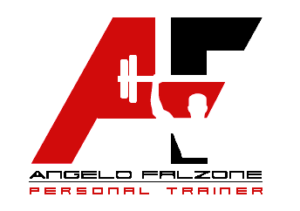Halfway House vs Sober Living What is a Halfway House
At a halfway house, https://off-road74.ru/snark/photocross/snark/en/ you will continue working on your early recovery while enjoying the peer support of your fellow recovering housemates. Residents of halfway houses will likely be required to attend therapy or 12-step program meetings as part of the house requirements, but halfway houses themselves do not provide addiction treatment. On the other hand, halfway houses are dorm-style living spaces owned by a government or private agency. They can be more crowded than sober living homes and offer fewer amenities.

What is the Difference Between Sober Living and Halfway Houses?
While halfway houses provide an excellent and affordable sober living community, there may be some disadvantages to a halfway home for certain people. Another difference from a halfway house is that a sober living home is usually not co-ed and can be further segmented by specific age groups. For example, here at New Life House, our homes are designed for young men in specific age ranges. We find that providing age requirements in our homes helps our young men form better bonds and friendships with their peers and further reinforces their desire to live sober lifestyles. To be admitted to a halfway house, individuals usually need to have completed a formal rehabilitation program.
How Online Therapy Is Transforming Access to Mental Health Support
Our free email newsletter offers guidance from top addiction specialists, inspiring sobriety stories, and practical recovery tips to help you or a loved one keep coming back and staying sober. Residents can leave to attend work, family obligations, religious observation, 12-step meetings, etc. Residents can expect random drug testing or alcohol screening to show that they are still sober. Instead, they serve as a safe, drug-free environment where recovering addicts can continue to work on https://getbestdrone.com/44-cool-devices-our-choose-of-the-best-new-tech-for-2023/ their early sobriety. Additionally, insurance coverage and other financial support are sometimes available to help with the cost.
Get Help With Alcohol Addiction
Typically, a sober living home has a small number of residents, generally fewer than 10. Rules, guidelines, and what to expect at a halfway out are now more precise than before. These living homes aren’t just places for recovery—they’re stepping stones back into society.

It’s much easier to find another facility than to struggle living at one that isn’t a good fit for you. We’re here to provide guidance and support for anyone on their sober living journey. Referrals to other services can help people to access additional support, such as medical care or mental health care. Depending on the level of care, you may have the opportunity to work off-site. If you or someone you know struggles with an addiction, help is available at Synergy Sobriety Solutions in Palm Beach, Florida.
Addiction Treatment Programs
- The recovery journey isn’t easy, but halfway houses make the path more apparent.
- Whichever housing solution we choose, we’ll be ready to handle triggers and cravings as they come — all thanks to the support of our peers in recovery.
- Typically, a sober living home has a small number of residents, generally fewer than 10.
- In some instances, rehab facilities may refer a patient to a halfway house following treatment.
Sober living homes, sometimes referred to as transitional living arrangements, halfway houses, or recovery residences, can be a step down from formal substance use treatment programs. These homes can offer an in-between option for individuals after they complete a treatment program and before they return to their homes and lives. This transition can provide continued support while residents learn to apply their newly learned self-reliant skills to real-life situations while they remain drug- or alcohol-free in a http://www.rock-n-roll.ru/details.php?mode=show&id=1078 community environment.

Support Groups
Halfway houses provide more freedom to residents than inpatient treatment programs. However, they still offer more structure and a larger support system than independent living. Halfway houses and sober living homes fall under the larger umbrella of recovery housing. While both facilities offer support for the newly substance-free, the two are distinguishable by fundamental differences. People who reside in sober living facilities can usually come and go as they please as long as they follow certain rules. For example, sober living houses may require residents to be home by a certain time or to go to work during the day.
Problematic Anger Found to Be a Common Mental Health Issue Among Norwegian Veterans
For anyone in recovery, considering a stay in a halfway house could be a pivotal step towards a successful, sober life. Like sober living homes, halfway houses provide residency for people who want to maintain a structured routine while they continue to work on their recovery. They can look for work, volunteer, or return to the job they had before addiction treatment.
This is where the rubber starts to meet the road in addiction recovery. Substance use treatment providers may offer oversight in some instances, although this is not always the case. Sober living homes are paid for by the individual residing in the home. However, it’s worth checking with your insurance provider to see if they might cover this cost. Family members also play an essential role—supporting their loved ones while setting clear boundaries. It’s more vital than ever in ensuring long-term sobriety post-halfway house stay.
